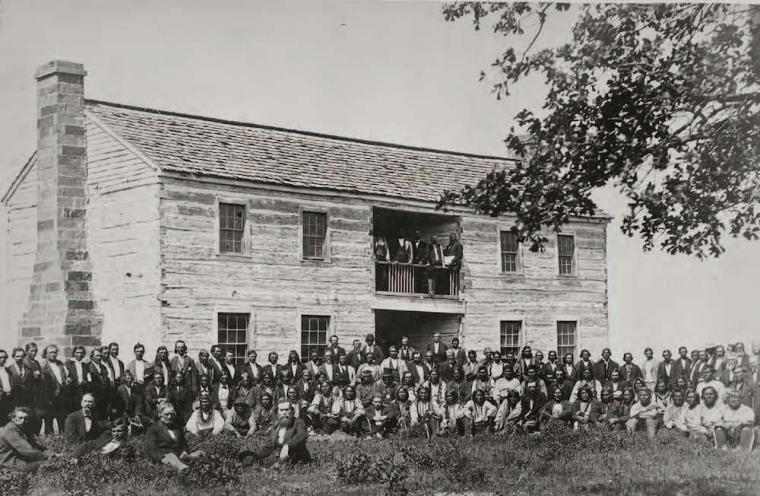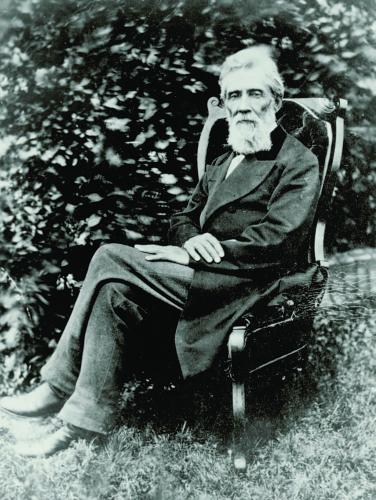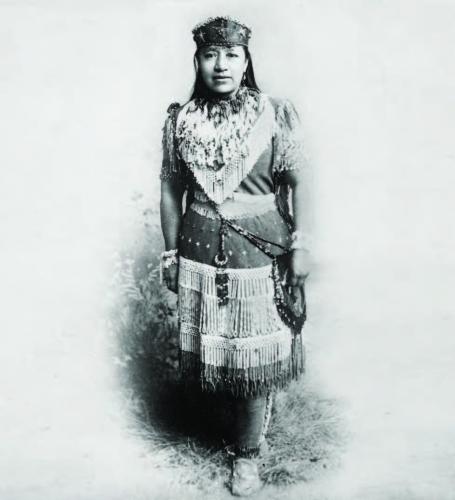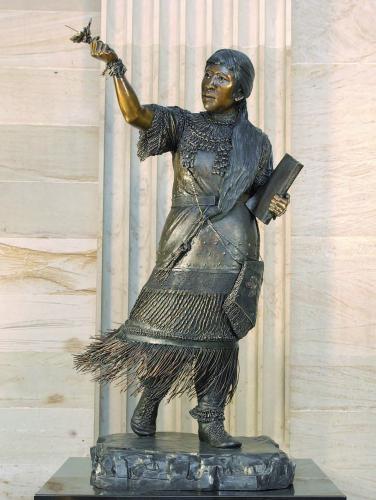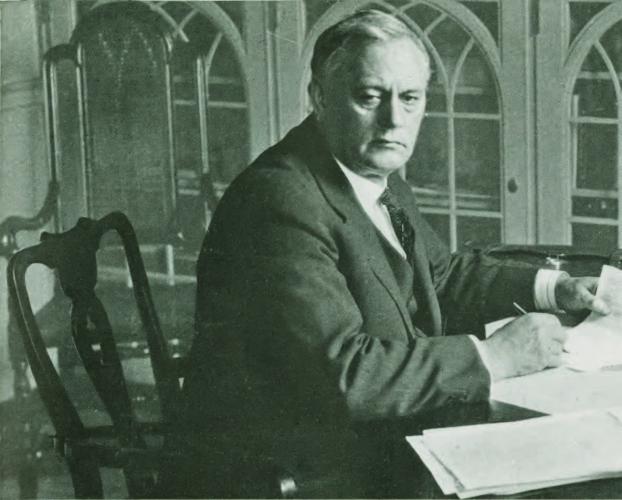On the first day of my Native American history classes I often ask the students to write down the names of three American Indians. “Don’t think,” I tell them. “Just write.” It is a good measure of what is in their heads when confronted with the history of Native people in the United States.
The responses seldom vary: Geronimo, Sitting Bull and Crazy Horse. All of these people are worthy of admiration – and they get significant play in my courses – but it is disappointing that modern college students would associate Indian history solely with victims of American expansion. Also disturbing is the fact that despite the unquestioned importance of these iconic figures, few people recognize that the vibrancy of contemporary tribal communities owes at least as much to courageous activists who used words rather than weapons to defend their communities. These activists made a place for Indian people within the borders of the United States.
There are dozens of these unknown heroes, but the following four make a good sample.
James McDonald (1801–1831) was the first American Indian trained professionally as a lawyer. During the 1820s he struggled to prevent his tribe’s removal from its Mississippi homeland. He failed in that effort, but his argument that America’s courts should enforce the promises embedded in the government’s Indian treaties laid the foundation for the future field of federal Indian law.
William Potter Ross (1820–1891) succeeded his famous uncle John Ross as Cherokee Chief in 1866 and spent the next two decades defending the rights of Indian Territory tribes. He organized “international councils” of tribal leaders, lobbied Congress and even wrote a constitution for an independent multi-tribal government. Why, he asked, couldn’t American Indians enjoy the status of European principalities like the Italian mountain republic of San Marino?
Sarah Winnemucca (ca. 1844–1891) was the first Native woman to publish her autobiography. Life Among the Piutes, which appeared in 1883, was both an introduction to the author’s tribal culture and a stinging indictment of American expansion in Nevada and California. Winnemucca’s testimony exposed the violence and duplicity that accompanied the “settlement” of the West and forced her audiences to face the costs of “manifest destiny.”
In 1911 Thomas Sloan (1863–1940) helped found the first national Indian reform organization, the Society of American Indians (SAI), and became the first Native person to open a Washington, D.C. law office. Sloan grew up on the Omaha reservation in Nebraska and had been sent to the Hampton Institute to be “civilized,” but he learned his most important life lessons watching corrupt and unjust government officials operate unchecked at agencies across the country.
James McDonald: The First Indian Lawyer
James McDonald was born in 1801, the son of a white trader and a Choctaw mother. Educated first in mission schools by Quakers, McDonald came to the attention of Thomas L. McKenney in 1818. McKenney was then in charge of the Office of Indian Trade (the forerunner of the Bureau of Indian Affairs) in Washington, D.C., and he recalled that “there were qualities of both heart and head in this youth of rare excellence.” He hired McDonald as a clerk and later encouraged him to become a lawyer. In 1821 McKenney arranged for McDonald to clerk with Congressman John McLean, in his Ohio law office. “Such was his capacity,” McKenney wrote, “that in about one-half the time ordinarily occupied by the most talented young men of our race, he had gone the rounds of his studies and was qualified for the bar.”
McDonald returned to Mississippi in 1823, just as the region’s major tribes were facing unprecedented pressure on their territories. A new generation of western politicians, led by Andrew Jackson, was insisting on scrapping treaties guaranteeing the tribes a place in the South and on moving the Indians west. In 1824 tribal leaders Pushmataha and Puckshenubbe organized a delegation to Washington, D.C., to argue their case. They enlisted McDonald to accompany them as a clerk and interpreter. Their action triggered a remarkable series of events. First, Puckshenubbe died from a fall during the journey to the capital. A few months later Pushmataha succumbed to a sudden infection incurred during the negotiations. Unexpectedly, McDonald, who had spent early treaty sessions drafting proposals and responses to the government’s demands, found himself the unofficial leader of the Choctaw representatives. For the first time, a tribal attorney would conduct tribal negotiations with the United States. The delegation succeeded in winning many of its objectives in a new treaty signed in January of 1825.
But a far more significant artifact of the Choctaws’ 1825 treaty was an open letter to Congress that McDonald drafted as he and his colleagues prepared to leave town. While acknowledging the expanding power of the Americans, their declaration insisted that “we are not doomed to extinction.” McDonald and his colleagues asserted their faith in the Indian future by linking their treaties to the values of the United States. “You have…laws all founded upon the principles of liberty and equality,” they wrote. Therefore: “we are confident that our rights will be preserved.” Speaking for the Choctaws, McDonald argued that the Americans’ “civilization” – their system of laws and lofty principles – could underwrite their future. Here was the kernel of what would become a fundamental tenet of federal Indian law: the idea that Indians could find protection in American laws and values. The young lawyer pointed out that even though they weren’t citizens, Indians had “rights” Congress and the courts should respect. His assertion was the first shot in a legal battle that stretches into our own time.
William Potter Ross: Defender of Modern Tribes
William Potter Ross came west to Indian Territory immediately following his graduation from Princeton in 1842. His mother’s brother, Chief John Ross, quickly put him to work. He was named editor of a new tribal newspaper, The Cherokee Advocate, and was soon elected to the national council. When John Ross died in 1866, tribal leaders appointed William Potter interim chief. For the next twenty years, the younger Ross led the struggle to protect the autonomy of the Indian nations in the West. He elaborated and promoted an ideology of Indian nationalism wherein Indian Territory would be recognized as America’s “San Marino.” This equation of an Italian principality and the nation’s Indian tribes captured Ross’s belief that Indian treaties embodied “pledges made to the Indians…pledges of protection…of self-government, pledges of ownership of their lands…. These pledges,” he added, “exist today.”
Ross rejected the idea that tribal governments were an artifact of the past. Shortly after being named chief, for example, he reached an agreement with the Union Pacific Railroad to build a jointly financed line through Indian Territory. In 1870 he chaired an inter-tribal gathering at Okmulgee in the Creek Nation, and was the principal author of a declaration that insisted the tribes were “not opposed to progress…we are not opposed to civilization.” Later that same year Ross led the drafting of a constitution that would transform Indian Territory into a self-administered federal protectorate. The new multi-tribal territory would be governed by a two-house legislature and a popularly elected governor. When federal officials rejected Ross’s proposal, he soldiered on, responding forcefully to critics of tribal governments and insisting that the United States keep its “pledges” to his tribe and others. Ross’s public statements circulated widely among tribal leaders so that, despite the tragedy surrounding the forced absorption of tribal homelands into the state of Oklahoma, other Native activists drew on the Cherokee leaders’ ideas and strategies. Those leaders expanded on Ross’s arguments and kept alive the idea of a Native San Marino living peacefully within the borders of the United States.
Sarah Winnemucca: Outspoken Paiute
A generation younger than William Potter Ross, Sarah Winnemucca shared little of his experience as a well-educated tribal diplomat and councilman. Instead she witnessed first-hand the brutal cost of American expansion into the Far West. “I was a very small child when the first white man came into our country,” she recalled. “They came like a lion…and have continued so ever since.” Born in 1844 on the eastern slope of the Sierra Nevadas, Winnemucca saw that “roaring lion” in the form of emigrant trains passing through Paiute country on the way to California, lawless miners in the nearby gold fields and unscrupulous government officials. She broke the taboos of her day by also pointing out the sexual assaults that were too often a feature of frontier communities and noting that Indian retaliation for such attacks was routinely misrepresented as “savage lawlessness.”
Called Thocmetony (Shell Flower) by her family, Winnemucca spent her childhood along the California–Nevada border where her father, Winnemucca, and grandfather, Truckee, frequently served as intermediaries between settlers and their Paiute kinsmen. Her first extended exposure to white people came during her teenage years when she served as a maid in the home of a prominent white settler. Winnemucca quickly mastered English and, thanks to her family connections, began interpreting for her brother and father when they dealt with settlers and army officers. She became an Indian Office interpreter in 1868, moving to the nearby Camp McDermitt agency. A decade later, after she endured an assignment at a blatantly corrupt agency on Oregon’s Malheur River, and a stint as a go-between during the Bannock War (triggered, she insisted, by the rape of two Indian girls), Winnemucca became an outspoken critic of the U.S. government. These experiences pushed her into the public arena.
When she emerged on the national stage in the 1880s, Winnemucca routinely contrasted the cruelty and immorality of American expansion with the humanity of Native societies. Describing traditional Paiute culture, she emphasized the central place that kinship and mutual care played in tribal life. “We don’t need to be taught to love our fathers and mothers,” she wrote. “We love them without being told to.” As for tribal government, “We have a republic as well as you…anybody can speak who has anything to say, women and all.” Winnemucca’s solution to the violent state of affairs surrounding her was to call for the creation of separate, autonomous tribal communities where Indian people could pursue an independent future apart from white settlers. She repeated these themes in public lectures that began in California but soon extended east as far as New England.
The most powerful passages in Life Among the Piutes – and the most compelling feature of Winnemucca’s lectures – occurred when she turned directly to her audience and shifted from witness of past events to commentator on the present. Her judgment was fierce and unmistakable: it was the Americans who deserved the label “savage,” she declared, not the Paiutes. “You who call yourselves the great civilization, you who have knelt upon Plymouth Rock,” she cried, “I am calling out to you for justice.”
Winnemucca followed up the publication of Life Among the Piutes with a furious schedule of lectures and public appearances. Her determination to expose the costs of American expansion created an opening for others. Dozens of new activists would surface in the decades to come, but few – if any – would speak as loudly or as articulately as Sarah Winnemucca.
Thomas Sloan: The Indians' Man in D.C.
Thomas Sloan was an unlikely activist. He had been an early and eager student at Hampton Institute, one of the Indian Office’s first off-reservation boarding schools. While Sarah Winnemucca was delivering blistering lectures on reservation corruption, Sloan was wearing a military-style school uniform and winning praise as a campus leader. Sloan returned to the Omaha reservation in 1889, eager to use his education. But he soon came face to face with the Indian Office’s authoritarian bureaucracy. Congress had recently passed the Dawes Severalty Act, establishing the framework for the division of tribal land into individual homesteads. Sloan applied for his allotment but was told by the local agent that he was not eligible. Sloan appealed the ruling but the answer was clear: case closed.
By chance, a childhood friend who had recently graduated from law school had returned to the community. Outraged by his treatment, Sloan apprenticed himself to the friend and, in 1892, was admitted to the Nebraska bar.
Sloan proved himself a remarkable attorney. He sued the agency over its denial of his allotment. In 1904, the Supreme Court decided the case in his favor. Sloan was the first tribal member to argue a case before that body. By 1911, he was appearing regularly in federal court and had begun to develop a national network of fellow-minded activists. That year these young Native leaders formed a new organization, the Society of American Indians. At its initial meeting, Sloan was named chairman of the group. He promised that the society could be counted on to “hammer hard” at its enemies. “Nothing can ever be done as long as we politely say that everything is all right,” he declared.
Sloan soon opened a law office in Washington and began shepherding visiting tribal leaders to the appropriate government or congressional offices. His aggressiveness worried the other members of the SAI leadership, however, and the attorney soon retreated into the background. In 1912 he surrendered leadership to a more cautious group headed by Sherman Coolidge, an Episcopal priest. But he rapidly expanded his law practice, representing clients from dozens of reservations. He also led investigations of the Crow, Blackfeet, White Earth and Yankton reservations. He became, he declared, a lawyer who made “a specialty of Indian work.” He counseled the Sioux Black Hills Council, the Grand Council of the Chippewa Indians, the Osages and others. Sloan hounded government officials and insisted they serve Indians before anyone else. “The grafter could not succeed in his graft,” he declared in 1920, “if the Indian Office did not make it possible.”
As Sloan became more aggressive, the SAI dropped much of its caution. When he was invited to deliver a major address before the group in 1918, he was eager to point out that the imminent end of World War I offered Native people an opportunity to press both their citizenship rights and their human rights as citizens of the world. He acknowledged that the 10,000 Indians returning from the war were being offered U.S. citizenship, but he argued that all Indians deserved the same status. It was the most deprived, he argued, who needed the most protection. Sloan also observed that while President Woodrow Wilson deserved praise for pressing the cause of self-determination for small nations, “it is time that the weak nations at home should receive some just consideration…. Let us apply the justice we are carrying to the weak nations abroad to the weak nations at home,” he declared. Engulfed in applause, Sloan was quickly elected the society’s new president.
Thomas Sloan remained an unapologetic advocate of Indian citizenship. He often clashed with cultural traditionalists in tribes, but he remained convinced that only American laws could be counted on to protect Native people against arbitrary authority and economic exploitation. Writing shortly before his death in 1940 he confessed that he was “anxious to succeed and keep up with my work.” He worried about his clients, he confessed, but he declared, “I am not giving up.”
This article is excerpted from Frederick E. Hoxie's most-recent book, This Indian Country: American Indian Activists and the Place They Made (Penguin, 2012).

